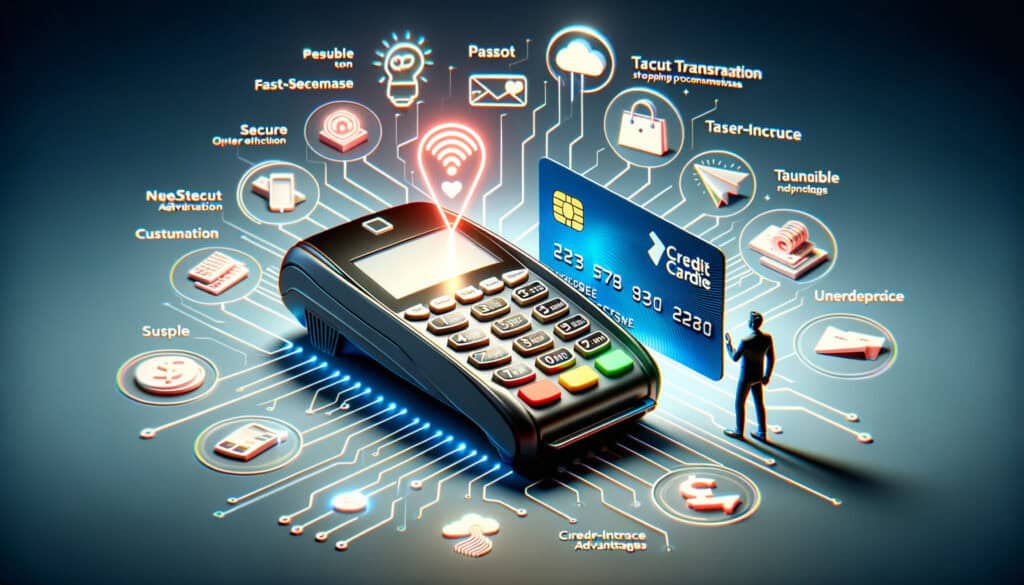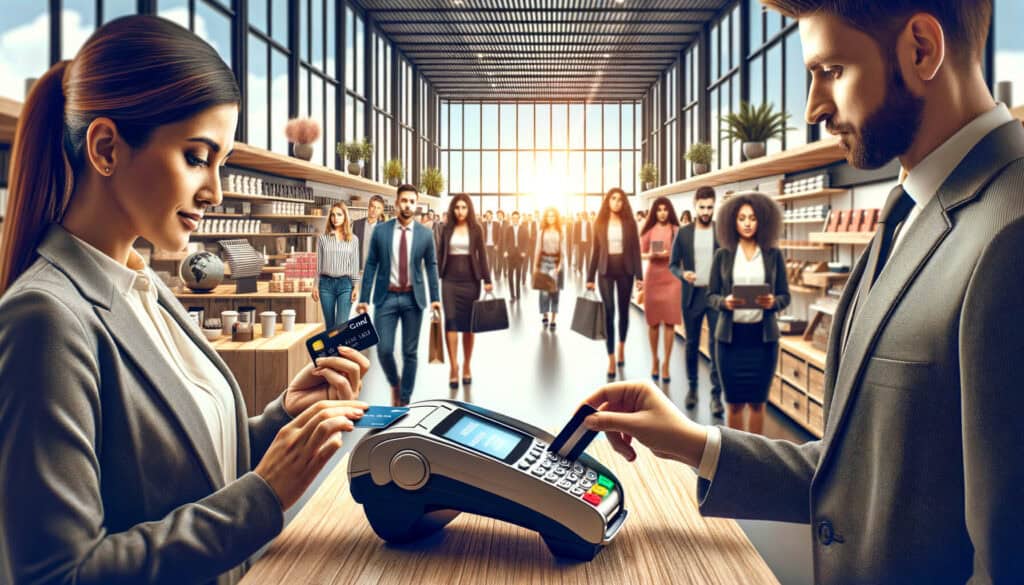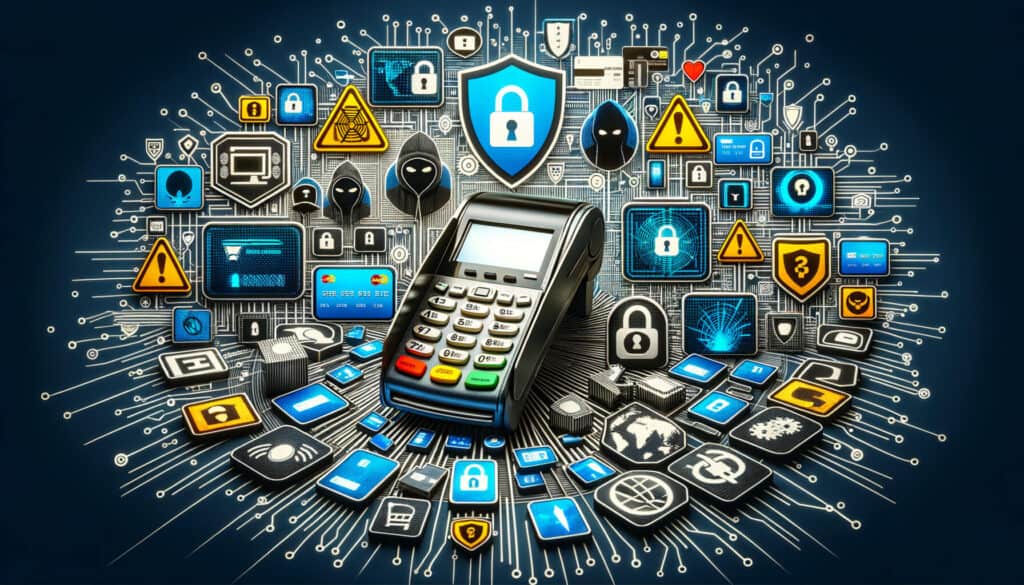
By Amanda Hoglund November 9, 2024
In today’s digital age, credit card terminals have become an essential tool for businesses of all sizes. Whether you run a small local shop or a large multinational corporation, having a credit card terminal is crucial for accepting payments from customers. This article will explore the various reasons why every business needs a credit card terminal and how it can benefit both the business and its customers.
Understanding Credit Card Terminals: Types and Features
Before delving into the benefits of credit card terminals, it is important to understand what they are and how they work. A credit card terminal is a device that allows businesses to process credit and debit card payments. There are different types of credit card terminals available in the market, ranging from traditional countertop terminals to mobile and wireless options.
Traditional countertop terminals are the most common type and are typically connected to a phone line or internet connection. They have a keypad for entering payment information and a display screen for customers to view the transaction details. Mobile and wireless terminals, on the other hand, offer more flexibility as they can be used anywhere with a cellular or Wi-Fi connection. They are especially useful for businesses that operate on-the-go, such as food trucks or delivery services.
Credit card terminals come with various features that enhance their functionality. Some terminals have built-in printers for generating receipts, while others may have touchscreens for a more user-friendly experience. Additionally, many terminals are equipped with near field communication (NFC) technology, allowing customers to make contactless payments using their smartphones or smartwatches.
Benefits of Having a Credit Card Terminal for Your Business

Now that we have a basic understanding of credit card terminals, let’s explore the numerous benefits they offer to businesses:
- Increased Sales Opportunities: By accepting credit and debit card payments, businesses can tap into a larger customer base. In today’s cashless society, many consumers prefer the convenience and security of using cards instead of carrying cash. By offering card payment options, businesses can attract more customers and increase sales.
- Improved Cash Flow: Credit card terminals enable businesses to receive payments instantly. Unlike checks or cash, which may require additional processing time, card payments are typically deposited into the business’s bank account within a few business days. This improves cash flow and allows businesses to access funds more quickly.
- Enhanced Customer Satisfaction: Customers appreciate the convenience of being able to pay with their preferred payment method. By offering card payment options, businesses can provide a seamless and hassle-free checkout experience, leading to higher customer satisfaction and loyalty.
- Reduced Risk of Fraud: Credit card terminals offer advanced security features that help protect businesses and their customers from fraudulent activities. These terminals encrypt sensitive payment data, making it difficult for hackers to intercept and misuse the information. Additionally, many terminals support EMV chip technology, which provides an extra layer of security by generating unique transaction codes for each payment.
- Streamlined Accounting and Reporting: Credit card terminals simplify the process of tracking and reconciling transactions. They generate detailed reports that can be easily integrated into accounting software, saving businesses time and effort. This also reduces the risk of human error associated with manual data entry.
- Access to Valuable Customer Data: Many credit card terminals offer the option to collect customer data, such as email addresses or phone numbers, during the payment process. This data can be used for targeted marketing campaigns, loyalty programs, or customer feedback initiatives. By leveraging this information, businesses can better understand their customers and tailor their offerings to meet their needs.
How Credit Card Terminals Improve Customer Experience

One of the key advantages of credit card terminals is their ability to enhance the overall customer experience. Here are some ways in which credit card terminals contribute to a positive customer experience:
- Convenience and Flexibility: Credit card terminals allow customers to pay using their preferred payment method, whether it’s a credit card, debit card, or mobile payment app. This flexibility gives customers the freedom to choose how they want to pay, making the checkout process more convenient and efficient.
- Speed and Efficiency: With credit card terminals, transactions can be processed quickly, reducing waiting times for customers. This is especially important during peak hours or busy periods when long queues can deter customers from making a purchase. By providing a fast and efficient checkout experience, businesses can leave a positive impression on their customers.
- Contactless Payments: Many credit card terminals support contactless payments, which have gained popularity in recent years. Contactless payments allow customers to simply tap their card or smartphone on the terminal to complete a transaction, eliminating the need for physical contact or the insertion of a card. This not only saves time but also promotes a hygienic and touch-free payment experience, which is particularly relevant in today’s health-conscious environment.
- Receipt Options: Credit card terminals offer various receipt options to cater to different customer preferences. Some terminals can send digital receipts via email or text message, while others can print paper receipts. By providing multiple receipt options, businesses can accommodate the preferences of their customers and reduce paper waste.
Enhancing Business Efficiency with Credit Card Terminals

Credit card terminals play a crucial role in improving business efficiency. Here are some ways in which credit card terminals contribute to streamlining business operations:
- Faster Checkout Process: Credit card terminals enable businesses to process payments quickly and efficiently. This reduces the time spent on each transaction, allowing businesses to serve more customers in less time. By speeding up the checkout process, businesses can increase their overall productivity and revenue.
- Inventory Management: Many credit card terminals integrate with inventory management systems, allowing businesses to track and manage their stock levels in real-time. This helps businesses avoid stockouts or overstocking, ensuring that they always have the right products available for their customers. By automating inventory management, businesses can save time and reduce the risk of human error.
- Seamless Integration with POS Systems: Credit card terminals can be seamlessly integrated with point-of-sale (POS) systems, creating a unified and efficient checkout experience. This integration eliminates the need for manual data entry and reduces the risk of errors associated with transferring payment information from the terminal to the POS system. It also enables businesses to generate detailed sales reports and analyze transaction data more effectively.
- Streamlined Accounting Processes: Credit card terminals simplify the accounting process by generating detailed transaction reports. These reports can be easily imported into accounting software, eliminating the need for manual data entry and reducing the risk of errors. This saves businesses time and effort, allowing them to focus on more strategic tasks.
Security Measures and Fraud Prevention with Credit Card Terminals

Security is a top concern for businesses when it comes to accepting credit card payments. Credit card terminals offer several security measures and fraud prevention features to protect businesses and their customers. Here are some key security measures provided by credit card terminals:
- Encryption: Credit card terminals encrypt sensitive payment data, such as card numbers and personal information, before transmitting it to the payment processor. Encryption ensures that the data is securely transmitted and makes it difficult for hackers to intercept and misuse the information.
- EMV Chip Technology: Many credit card terminals support EMV chip technology, which provides an extra layer of security. EMV chips generate unique transaction codes for each payment, making it nearly impossible for fraudsters to clone or counterfeit cards. By accepting EMV chip cards, businesses can significantly reduce the risk of card-present fraud.
- PCI Compliance: Payment Card Industry Data Security Standard (PCI DSS) compliance is a set of security standards that businesses must adhere to when accepting card payments. Credit card terminals are designed to meet these standards, ensuring that businesses are compliant and their customers’ payment data is protected.
- Tokenization: Some credit card terminals offer tokenization, which replaces sensitive payment data with a unique token. This token is used for transaction processing, while the actual card data is securely stored by the payment processor. Tokenization adds an extra layer of security by ensuring that sensitive card data is not stored within the business’s systems.
Choosing the Right Credit Card Terminal for Your Business
When it comes to choosing a credit card terminal for your business, there are several factors to consider. Here are some key considerations to help you make an informed decision:
- Business Type and Size: The type of business you operate and its size will influence the type of credit card terminal you need. For example, if you run a small retail store, a traditional countertop terminal may be sufficient. However, if you operate a food truck or a mobile service, a mobile or wireless terminal would be more suitable.
- Payment Options: Consider the payment options you want to offer to your customers. Do you want to accept only card payments, or do you also want to support mobile payment apps like Apple Pay or Google Pay? Make sure the credit card terminal you choose supports the payment options you want to offer.
- Connectivity: Consider the connectivity options available for the credit card terminal. Traditional countertop terminals typically require a phone line or internet connection, while mobile and wireless terminals rely on cellular or Wi-Fi networks. Choose a terminal that aligns with your business’s connectivity needs.
- Features and Functionality: Evaluate the features and functionality offered by different credit card terminals. Consider factors such as touchscreen capabilities, built-in printers, NFC technology, and compatibility with other systems or software you use in your business.
- Cost: Cost is an important consideration when choosing a credit card terminal. Compare the upfront costs, transaction fees, and any additional charges associated with different terminals. Also, consider the long-term costs, such as maintenance and software updates.
Setting Up and Integrating a Credit Card Terminal System
Once you have chosen the right credit card terminal for your business, the next step is to set it up and integrate it into your existing systems. Here are some steps to guide you through the process:
- Choose a Payment Processor: Before setting up your credit card terminal, you need to choose a payment processor. A payment processor is a company that handles the processing of card payments on behalf of businesses. Research different payment processors and choose one that offers competitive rates, reliable service, and the features you need.
- Obtain Merchant Services: To accept card payments, you need to set up a merchant account with a bank or payment processor. A merchant account is a type of bank account that allows businesses to accept card payments. Contact your chosen payment processor to set up a merchant account and obtain the necessary merchant services.
- Connect the Terminal: Follow the manufacturer’s instructions to connect your credit card terminal to the appropriate network. This may involve connecting the terminal to a phone line, internet connection, or a mobile device, depending on the type of terminal you have chosen.
- Test the Terminal: Before accepting live payments, it is important to test the credit card terminal to ensure that it is functioning correctly. Process a few test transactions using different payment methods to verify that the terminal is working as expected.
- Integrate with POS System: If you are using a POS system, integrate your credit card terminal with the POS system to create a seamless checkout experience. Follow the instructions provided by your POS system provider to integrate the terminal and ensure that payment information is transferred accurately.
- Train Staff: Once the credit card terminal is set up and integrated, train your staff on how to use it effectively. Ensure that they are familiar with the different payment options, understand the security measures in place, and can troubleshoot common issues that may arise during the payment process.
Frequently Asked Questions about Credit Card Terminals
Q1. What is a credit card terminal?
A credit card terminal is a device that allows businesses to process credit and debit card payments. It typically consists of a keypad for entering payment information, a display screen for customers to view transaction details, and a printer for generating receipts.
Q2. How do credit card terminals work?
Credit card terminals work by securely transmitting payment data from the customer’s card to the payment processor. The terminal encrypts the data to protect it from unauthorized access and generates a unique transaction code for each payment. The payment processor then verifies the transaction and transfers the funds to the business’s bank account.
Q3. Can I accept mobile payments with a credit card terminal?
Yes, many credit card terminals support mobile payments. They can accept payments made through mobile payment apps like Apple Pay or Google Pay, allowing customers to make contactless payments using their smartphones or smartwatches.
Q4. Are credit card terminals secure?
Credit card terminals are designed with security in mind. They encrypt sensitive payment data, support EMV chip technology, and comply with PCI DSS standards to protect businesses and their customers from fraud. However, it is important for businesses to follow best practices, such as regularly updating terminal software and training staff on security protocols, to ensure maximum security.
Q5. How much does a credit card terminal cost?
The cost of a credit card terminal varies depending on the type of terminal, features, and the payment processor you choose. Some terminals may have upfront costs, while others may require a monthly rental fee. Additionally, there may be transaction fees and other charges associated with using the terminal. It is important to compare different options and consider the long-term costs before making a decision.
Conclusion
In conclusion, credit card terminals are an indispensable tool for businesses in today’s digital age. They offer numerous benefits, including increased sales opportunities, improved cash flow, enhanced customer satisfaction, and streamlined business operations. Credit card terminals also contribute to a positive customer experience by providing convenience, speed, and flexibility in the payment process.
With advanced security measures and fraud prevention features, credit card terminals help protect businesses and their customers from fraudulent activities. When choosing a credit card terminal, businesses should consider factors such as their business type, payment options, connectivity, features, and cost. By setting up and integrating a credit card terminal system effectively, businesses can optimize their payment processes and provide a seamless checkout experience for their customers.